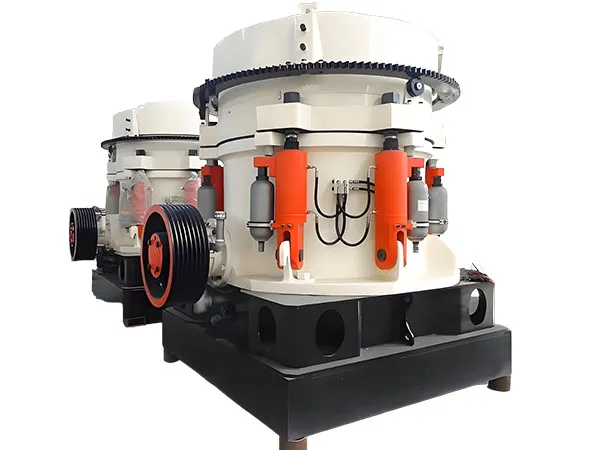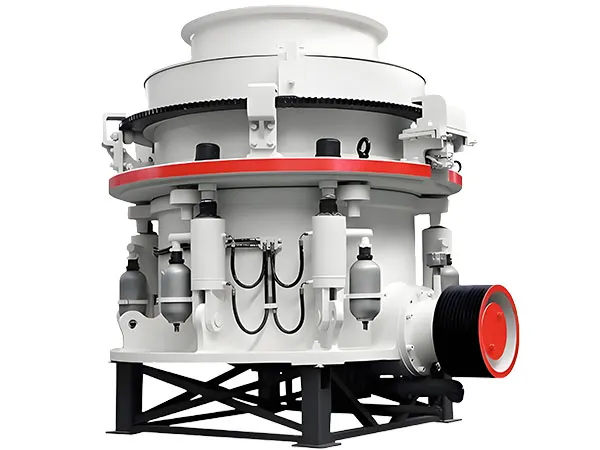The replacement cycle for cone crusher wearing parts, like the mantle and concave (bowl liner), isn't fixed but typically ranges from a few weeks to several months. A general guideline for a cone crusher's eccentric sleeve and bushings is replacement every 1000-2000 hours of operation, while the thrust bearing might last 1500-3000 hours.
The actual lifespan is heavily influenced by several key factors, so it's crucial to monitor wear closely rather than sticking to a rigid schedule.

The wear life is a direct result of the interplay between the material being crushed and how the crusher is operated.
1. Material Characteristics (The Most Important Factor)
Abrasiveness: This is the single biggest factor. Materials with high silica (SiO₂) content, like granite, quartzite, and abrasive river rock, will wear out liners extremely fast. Soft materials like limestone or coal will result in a very long wear life.
Hardness: While related to abrasiveness, a very hard but non-abrasive material might be difficult to crush but won't necessarily wear liners quickly.
Feed Size: Feeding material that is too large (slab-shaped or oversized) for the crushing chamber can cause localized "point loading" and stress, leading to premature cracking and uneven wear.
Contaminants: The presence of uncrushable "tramp" metal (rebar, bucket teeth, etc.) can cause catastrophic failure instantly. High clay content can pack in the chamber, leading to high pressure and accelerated wear.
2. Operational Parameters
Choke Feeding: This is the ideal operating condition. Keeping the crusher's chamber full ("choked") ensures rock-on-rock crushing, promotes even wear across the entire surface of the mantle and bowl liner, and maximizes throughput and product quality. Trickle feeding (a thin stream of material) causes rock to impact the liners directly, leading to rapid, localized wear.
Closed Side Setting (CSS): A tighter CSS means the crusher is doing more work and creating a finer product. This increases the crushing forces and the time material spends in the chamber, leading to a shorter wear life.
Crusher Speed: Running the crusher at the speed recommended by the manufacturer for the specific application is crucial for optimal performance and wear life.
Moisture Content: Very wet and sticky feed can pack in the chamber, increasing pressure and wear.
3. Manganese Steel Alloy Selection
The type of manganese steel used for the liners makes a huge difference.
Standard Manganese (Mn14): 13-14% Manganese. Good for general-purpose applications with lower abrasion.
High Manganese (Mn18): 18-19% Manganese. The industry workhorse. Offers a great balance of toughness and wear resistance for most aggregate and mining applications.
Premium Manganese (Mn22): 21-22% Manganese. Used for highly abrasive materials where maximum wear life is required. It is more expensive and can be slightly more brittle.
Specialty Alloys: Some manufacturers offer liners with ceramic inserts or titanium carbide (TiC) composites for extreme wear zones.
General Replacement Cycle Estimates (by Tonnage)
These are generalized figures. Always consult your manufacturer and track your own data.

|
Application / Rock Type |
Abrasiveness |
Estimated Tonnage per Set |
Estimated Operating Hours |
|
Soft Rock (Limestone, Coal) |
Low |
250,000 - 500,000+ tonnes |
1,000 - 2,500+ hours |
|
Medium Abrasive (Dolomite, Andesite) |
Medium |
100,000 - 250,000 tonnes |
500 - 1,200 hours |
|
Highly Abrasive (Granite, Basalt) |
High |
50,000 - 120,000 tonnes |
300 - 600 hours |
|
Extremely Abrasive (River Rock, Gravel w/ high silica) |
Very High |
30,000 - 70,000 tonnes |
250 - 450 hours |
Disclaimer: These are ballpark estimates. A high-capacity crusher processing 500 tonnes per hour (TPH) will run through its wear life much faster in terms of hours than a smaller crusher processing 150 TPH, even if they process the same total tonnage.
Rely on a combination of these methods:
Visual Inspection: Regularly look inside the crusher. When the wear profile is gone and the liner surface is smooth, or when you see signs of cracking or holes, it's time for a change. Wear should not exceed the manufacturer's recommended limits (often marked by a groove or witness mark).
Performance Drop-off: The most telling sign. When you can no longer produce the desired product specification, or when throughput (tonnes per hour) drops significantly, your liners have lost their effective profile.
Tonnage Tracking: This is the best practice. Log the tonnage processed after each liner change. Over time, you will develop a highly accurate forecast for your specific operation.
Ultrasonic Thickness Testing: Use an ultrasonic thickness gauge to measure the remaining thickness of the liners at various points to predict the remaining life more accurately.
Running to Failure (Not Recommended): Running liners until they break can cause severe damage to the crusher's head or bowl, leading to repairs that are far more expensive and time-consuming than a simple liner change.
The best strategy is proactive monitoring. Track your tonnage, operate your crusher correctly (especially choke feeding), and select the right manganese alloy for your material. By doing this, you can maximize the life of your wearing parts, reduce downtime, and lower your overall cost per tonne.
How Jaw Crushers Improve Efficiency in Stone Crushing Plants
2025-12-29 09:12Jaw Crusher Output Insufficient? 7 Key Checkpoints to Help You Quickly Restore Production Capacity
2025-12-18 05:50How Jaw Crushers Boost Efficiency in Modern Stone Crushing Plants
2025-12-11 08:03Jaw Crusher Selection Guide: How to Precisely Select a Jaw Crusher for Different Working Conditions
2025-12-05 06:38Address: Luoyang Luoxin Industrial Park, Henan,China
E-mail: sales@yd-crusher.com
Phone: 86-139-3993-0123

Yude
Mechanical
Create the greatest value for customers
Provide the best quality products and services
86-139-3993-0123
sales@yd-crusher.com
Luoyang Luoxin Industrial Park, Henan,China